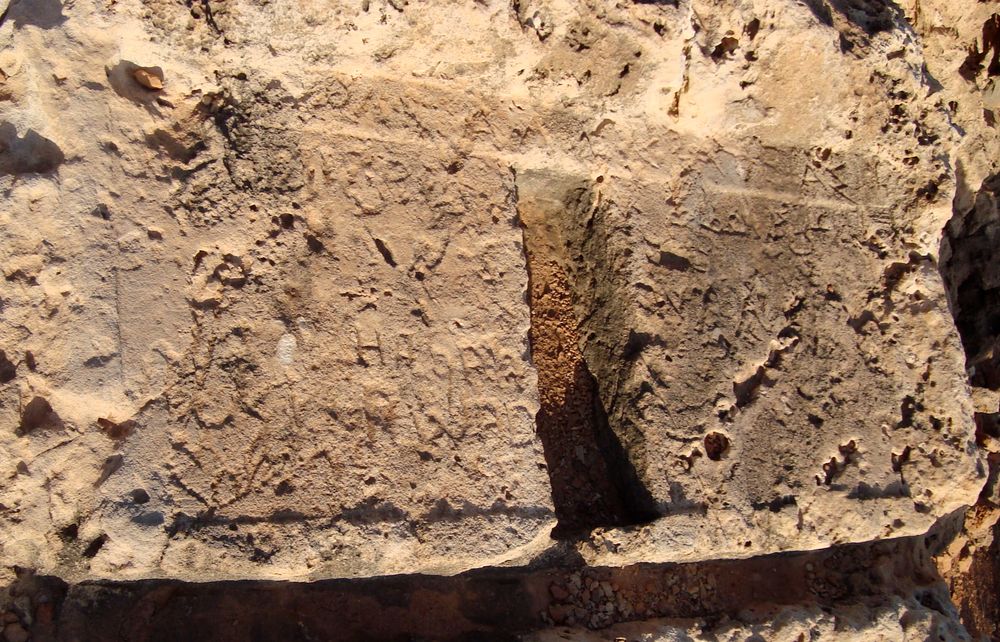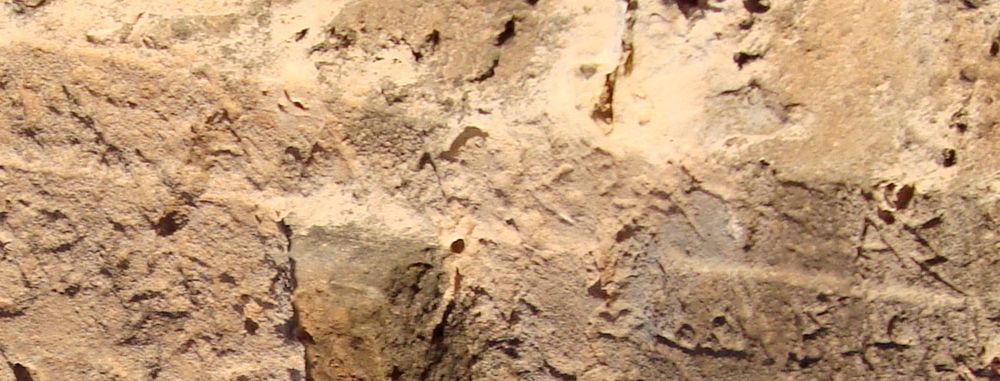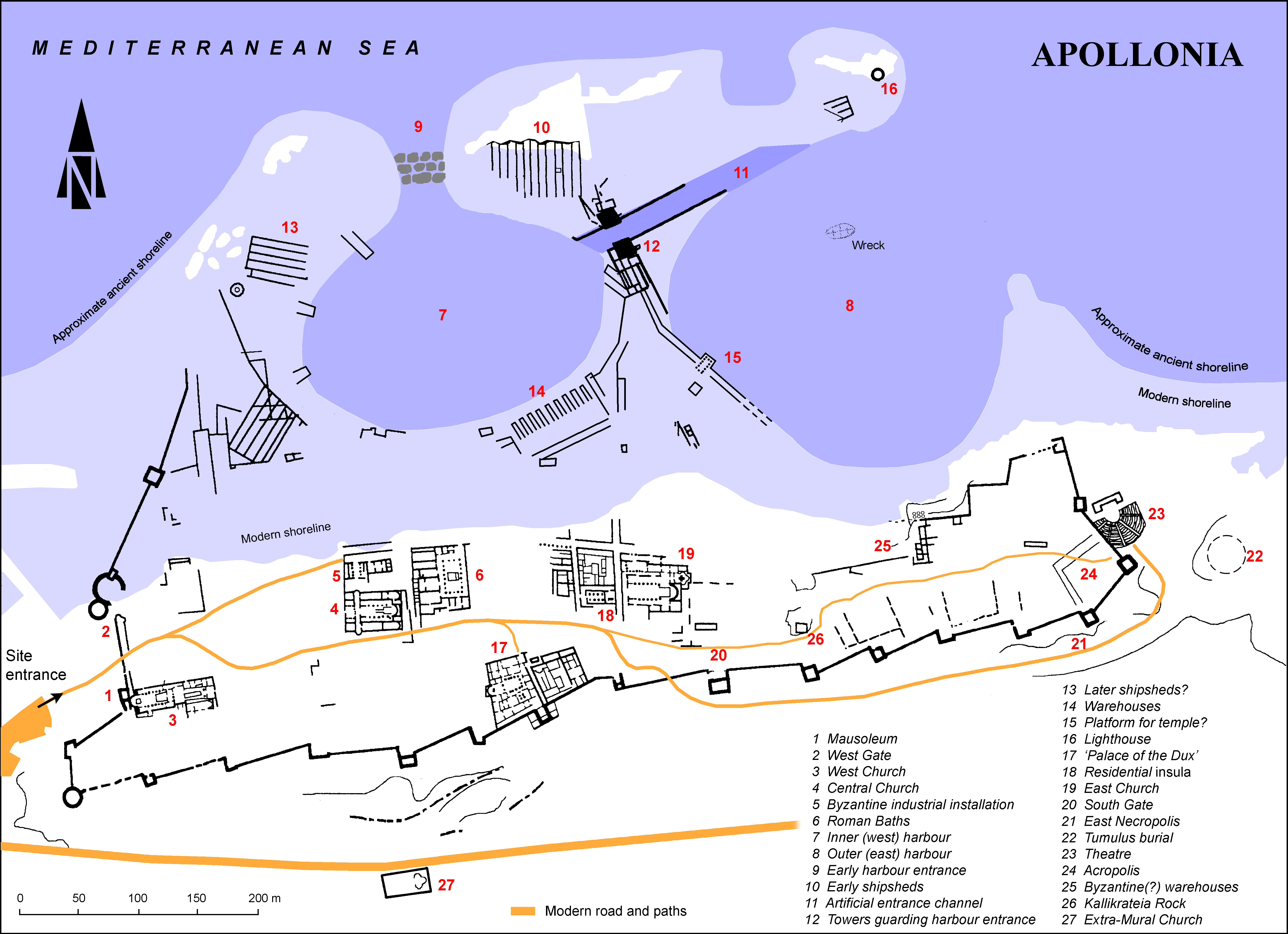EpiDoc XML:
IGCyr0333002
Trismegistos ID:
738325
Source description
Support: Rectangular altar cut in the rock, surrounded by a regular margin and originally separated in two unequal parts; a deep transversal trench cutting the rectangle in the middle of the width might be a pit for libations (whole altar w: 0.96 × h: 0.46; inscribed margin w: 0.96 × h: 0.06).
Layout: Inscribed on the upper border; many later Greek and Arabic letters were scratched everywhere.
Letters: 0.04; epsilon with oblique bars, rho with large loop not quite circular.
Date: Fifth century BC (lettering).
Findspot: Found before 1923 in the Port of Cyrene, later Apollonia ➚: at top of Kallikrateia Rock.
Place of origin: Findspot.
Last recorded location: Seen by C. Dobias-Lalou in 1982 and many other times in situ in Sūsah: Kallikrateia Rock.
Text constituted from: Transcription from stone (CDL).
Bibliography
Ferri 1923, p. 8, n. 7e, fig. 8, and Oliverio 1932-1933, pp. 166-167, n. 48, tab. XXVII, figs. 52-53, whence SEG, 9.350; Reynolds 1976, n. 1, whence SEG, 27.1125bis; IGCyr 033300 ➚. Cf. Chamoux 1998, and Callot 1999, pp. 85-86, n. 41, whence SEG, 48.2047; Dobias-Lalou 2000, p. 227.
Text
Apparatus
1: no gap mentioned by others at the beginning
French translation
[c. 4 - 5] de Kallikrateia.
English translation
[c. 4 - 5] of Kallikrateia.
Italian translation
[c. 4 - 5] di Kallikrateia.
Commentary
The preserved name does not begin at the left end of the space available, where rests of illegible letters seem to exist under later graffiti; however there is not enough space for a word like ἐσχάρα. Might it be some form of ἱαρός?
The date of the inscription, erroneously given as first century BC in SEG, 9.350, was said «buona epoca» by Oliverio 1932-1933, pp. 166-167, n. 48 and «probably early third century BC» by Reynolds 1976, n. 1. But both epsilon and rho at least belong to an older period, even older than the end of the fourth century (so Callot 1999, pp. 85-86, n. 41 and Dobias-Lalou 2000, p. 227).
Chamoux 1998 suggested that the name was an epithet or a cult-name of Artemis, as a protector of the port. For other deities honoured on the spot, see Dobias-Lalou 2012, pp. 230-231 and GVCyr0522.
CC BY-NC-SA 4.0 Deed Attribution-NonCommercial-ShareAlike 4.0 International License.
All citation, reuse or distribution of this work must contain a link back to DOI: https://doi.org/10.60760/unibo/igcyrgvcyr2 and the filename (IGCyr000000 or GVCyr000), as well as the year of consultation.



